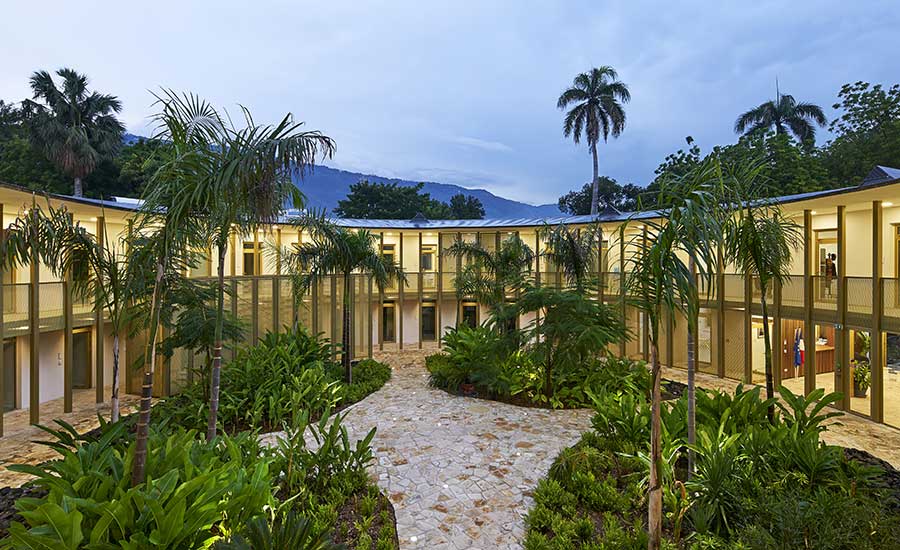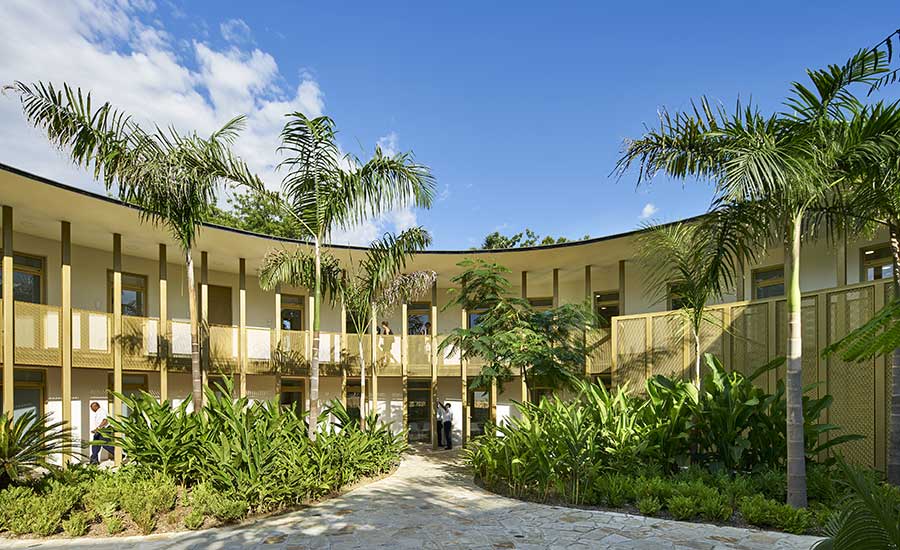New French Embassy Opens in Haiti Years After Devastating Earthquake

Photo © Michel Denance

Photo © Michel Denance

Photo © Michel Denance

Photo © Michel Denance

Photo © Michel Denance

Photo © Michel Denance

Photo © Michel Denance







On January 12, 2010 a magnitude-7 earthquake struck the southern part of the Caribbean island of Haiti, killing at least 100,000 people, affecting millions, and destroying or severely damaging hundreds of thousands of buildings. Among the material losses were the Presidential Palace in Haiti’s capital Port-au-Prince, and the nearby French embassy, which since 1968 had occupied the historic Hôtel Laroche, a grand villa dating back to the early 20th century. As a symbol of hope and renewal, France decided to rebuild as quickly as possible, launching an architectural competition in 2011 and selecting Paris-based firm Explorations Architecture as the winner. But things didn’t quite go as planned, and finally now, seven years later, the new Ambassade de France en Haïti has at last been unveiled. It’s rather a different building than the original concept, but its story is nonetheless one of optimism for the beleaguered nation.
Explorations’ winning design consisted of three circular structures of different sizes that were to be prefabricated in Europe and assembled on site. (Since everything, including the building industry, had ground to a halt on the devastated island, this seemed to be the only way of realizing the embassy within the initial timeframe.) The architects took inspiration from Haiti’s traditional wooden “gingerbread” houses, revisiting them through the lens of Jean Prouvé and planning to realize them in steel and wood. But contractor bids proved way too expensive, even after reducing the project to just one structure, and the attack on the French embassy in Tripoli delayed matters yet further. By the time of the third call for bids, in 2014, concrete production in Haiti had resumed, and the decision was taken to switch to this material—partly because, while good at resisting hurricanes, lightweight frames are less effective when it comes to withstanding earthquakes. A Canadian company began construction, but folded in August 2015 after completing only the foundations. Explorations then decided to hire local concrete firm Kay Consulting, which had poured the foundations, to complete the structural work. This was a fortuitous outcome on several fronts, since the embassy as built is, to a large extent, made in Haiti—a source of local revenue and pride that will be easier to maintain than an imported structure requiring overseas expertise. Elements prefabricated in France still make a substantial contribution to the new building, however, in the form of the golden-painted metal galleries that run around its central courtyard, and the window frames and jalousies that cadence its outer facade.
Taking cues from the old Hôtel Laroche, the embassy is two stories high with wide shading eaves and window proportions that recall its destroyed predecessor. Of particular delight are the tropical grounds and courtyard by landscape designers D’Ici là, which contain the artwork Étoile de terre by Gilles Brusset, which fills the space at the middle of the embassy’s oval driveway—a feature reminiscent of the original landscaping layout. But don’t be surprised if you miss the embassy when out on the street—for security reasons it remains discreet, sheltered behind a blank entrance containing vehicle and pedestrian checkpoints. This is also an old architectural trick: as you enter from the intense hubbub of downtown Port-au-Prince, you’re entirely unprepared for the sight of this serene object gently floating in an oasis of calm. Stately but not in the least forbidding, the project intelligently mixes historical and contemporary references of European and Caribbean provenance to strike just the right note.










